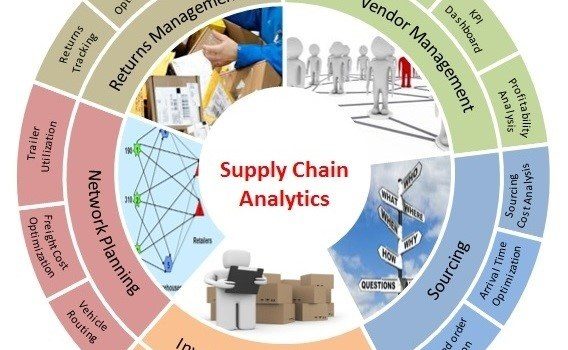Getting Serious About Supply Chain Analytics
Your supply chain is your biggest asset and your biggest obstacle. Without global distributors it would be more expensive and less efficient to run your business. But supply chain issues are frequent considering how complex these networks actually are. That leaves you totally dependent on something that is almost guaranteed to fall behind and break down at some point.
Companies are turning to analytics in order to predict and prevent supply chain issues. Analyzing massive amounts of data reveals when and where complex systems are and are not working. The only problem is that traditional analytics is time- and labor-intensive, making it slow to deliver insights. Due to that pace, companies can resolve a few supply chain issues but never all of them.
Self-service analytics offers a simple solution. The technology takes high-powered, high-velocity analytics and makes them accessible to non-technical users. That means anyone invested in your supply chain (including sales staff, procurement officers, accountants, and the like) can run their own analytics at any time. That might sound like a minor capability. In practice, however, self-service analytics fixes the most common and consequential supply chain problems.
Here’s how:
Spot Supply Chain Issues Earlier
Most supply chain issues are apparent in advance. They just don’t get noticed because no one is paying attention. Traditional analytics is partly to blame because the people most likely to see the problems aren’t dealing with the data. Self-directed supply chain analytics, offered by data solutions including ThoughtSpot, reverses that, allowing professionals at all levels to monitor supply chains in-depth. Consequently, issues like delays and shortages can be forecast, prevented, and minimized.
Keep Costs in Check
The nature of supply chains makes them prone to inefficiency. At countless points along the line there are instances of waste and redundancy. The problem, once again, is that no one is in a position to monitor for them. Small, isolated analytics teams simply don’t have the time or resources to dive into the details. Plus, they lack the hands-on experience to understand how supply chain really work. Giving analytics to those on the front lines empowers them to tweak processes, cut costs, and engineer the most effective supply chain possible.
Ensure Consistent Quality
Quality issues are highly disruptive and extremely expensive. They are also notoriously hard to solve. Predicting if and when issues will arise is next to impossible with traditional analytics. Quality changes so quickly and unexpectedly that most analytics is simply too slow to be insightful or helpful. With self-serve analytics, by contrast, individuals can engage with the data and identify the root of quality problems. Eventually they can prevent these problems instead of just minimizing the damage afterwards.
Remove Obstacles to Understanding
The biggest problem with most supply chains is perspective. Individuals lack the information they need to understand chains from the top down and the bottom up. Older approaches to data management only exacerbate this issue by trapping data in silos and keeping departments strictly separate. Self-service analytics is a way to break down those barriers so that all parties work towards common objectives. Communication and collaboration are key, which are only possible when information is widely accessible.
Embracing analytics is a big step, but it’s only the first step. The next one is to decide what type of analytics are right for your company, supply chain, and staff. The decision is yours. But if you want to hit the ground running, self-service analytics provides the burst you need.

















